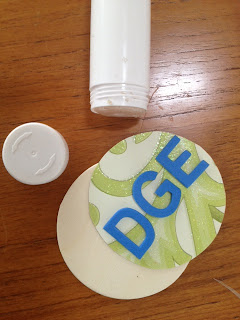This week I wanted to tell you about my online store, Good Sensory Learning. I’m Dr. Erica Warren, and I established this site so I could share all the materials that I have created over the last 20+ years as a learning specialist and educational therapist. When I first began my private practice, Learning to Learn, I had great difficulty finding fun and multisensory materials for my students that were effective and engaging. So back in 2005, I made it my mission to design and distribute high-end, remedial products as well as memorable, motivating lessons that bring delight to learning. If you would like to try a free sampling of my activities , CLICK HERE . How Are the Products Organized at Good Sensory Learning? You can download my Free Printable Catalog or you can browse the site using the grey “search all products” bar in the top right of any page with keywords such as dyslexia, working memory, and executive functioning. What’s more, drop down menus in the red banner allow you t...
The English language is packed with confusing rules that can make decoding and reading difficult tasks to master. What's more, many of the workbooks and activities are boring, and even if students complete the lesson, it doesn't mean that they can apply the content in a different learning situation. However, presenting the same content in a game-like format can make a lesson memorable and engaging even for struggling learners.
Here is a fun game that my students love to play. It's great for literacy centers or reading centers, and it will also assist students with spelling.
Materials:
I hope you enjoy this game. I would love to hear you thoughts.
Here is a fun game that my students love to play. It's great for literacy centers or reading centers, and it will also assist students with spelling.
Materials:
- 1.5 -2.0 hole punch or round object that can be traced
- Craft paper
- Laminating sheets and laminator or
- Round wooden discs from the craft store and glue
- Playing cards: You can purchase blank playing cards on Amazon: see link at the bottom, or use laminated craft paper and then write the letters on the blank side with a permanent marker.
- Place the word beginnings onto playing cards. I make a stack of at least forty cards. Twenty cards should illustrate the beginning of TCH words such as MA, WI, DU, and STI. The other twenty cards should illustrate the beginning of CH words such as MUN, HUN, BEA, and BEL. Many lists can be found on the internet.
- Make the spinning disc with the two word ending options on either side. You can glue craft paper and colorful letters onto wooden discs, or glue two, thick, round pieces of craft paper together and laminate.

- Teach the students the spelling rule: TCH is usually used after a short vowel sound, and CH comes after a consonant or long vowel sound.
- Teach the students the spelling rule: DGE is usually used after a short vowel sound, and GE comes after a consonant or long vowel sound.
- Teach the students the spelling rule: CK is usually used after a short vowel sound, and K comes after a consonant or long vowel sound.

- At the beginning of each turn, the player spins the round disc with the word endings on them. Hold the disc with one finger as illustrated and flick the edge with another finger.
- When the disc falls to the table, select a card with the word beginning.
- Put the word beginning and word ending together to see if it forms a word with the correct spelling.
- If it does, the player gets to keep the card. If not, the card is returned to the bottom of the stack.
- The winner is the first player to collect 10 cards.

I hope you enjoy this game. I would love to hear you thoughts.
Cheers, Dr. Erica Warren
Dr. Erica Warren is the author, illustrator, and publisher of multisensory educational materials at Good Sensory Learning and Dyslexia Materials. She is also the director of Learning to Learn and Learning Specialist Courses.
· Blog: https://learningspecialistmaterials.blogspot.com/
· YouTube Channel: https://www.youtube.com/user/warrenerica1
· Podcast: https://godyslexia.com/
· Store: http://www.Goodsensorylearning.com/ & www.dyslexiamaterials.com
· Courses: http://www.learningspecialistcourses.com/
· Newsletter Sign-up: https://app.convertkit.com/landing_pages/69400
· Blog: https://learningspecialistmaterials.blogspot.com/
· YouTube Channel: https://www.youtube.com/user/warrenerica1
· Podcast: https://godyslexia.com/
· Store: http://www.Goodsensorylearning.com/ & www.dyslexiamaterials.com
· Courses: http://www.learningspecialistcourses.com/
· Newsletter Sign-up: https://app.convertkit.com/landing_pages/69400



Hi Dr,
ReplyDeleteI love this activity. Will give it a try with my 8 - 9 year-old pupils.
Will let you know the outcome after the trial.
Thanks so much for sharing.